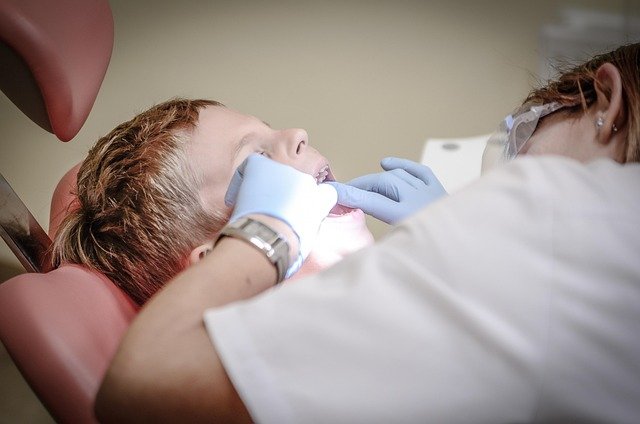Modern Dental Implants: Restoring Smiles with Confidence
Dental implants have transformed restorative dentistry by offering a permanent solution for missing teeth. Unlike traditional dentures or bridges, implants integrate with the jawbone to provide stability, functionality, and a natural appearance. With advancements in technology and techniques, modern implant procedures have become more accessible and predictable, helping individuals regain their confidence and oral health. Understanding the options, process, and considerations can help you make informed decisions about this transformative treatment.

Missing teeth can affect more than just appearance—they impact chewing ability, speech, and overall oral health. Modern dental implants offer a reliable solution that mimics natural tooth structure and function. As technology continues to evolve, implant treatments have become more efficient, comfortable, and successful for a wide range of patients.
Why Dental Implants Are Widely Chosen
Dental implants have gained popularity due to their durability and natural feel. Unlike removable dentures, implants are surgically placed into the jawbone, where they fuse with the bone through a process called osseointegration. This creates a stable foundation for replacement teeth that function like natural ones. Implants help preserve jawbone density, prevent facial sagging, and eliminate the discomfort often associated with traditional prosthetics. Many patients appreciate that implants do not require altering adjacent healthy teeth, as is necessary with dental bridges. The long-term success rates of implants, often exceeding 95 percent when properly maintained, make them a preferred choice for tooth replacement.
Types of Dental Implants and Solutions
Several types of dental implants are available to accommodate different needs and anatomical considerations. Endosteal implants are the most common type, placed directly into the jawbone and typically shaped like small screws or cylinders. Subperiosteal implants rest on top of the jawbone beneath the gum tissue and are used when insufficient bone height exists. All-on-4 or All-on-6 systems allow for full-arch restoration using just four to six strategically placed implants, reducing surgery time and recovery. Mini implants, which are smaller in diameter, can be used for patients with less bone volume or to stabilize dentures. Zygomatic implants anchor into the cheekbone and are an option for patients with severe upper jaw bone loss. Each solution is tailored to individual anatomy, bone quality, and restorative goals.
Advances in Modern Implant Treatments
Technological advancements have significantly improved implant procedures and outcomes. Digital imaging and 3D cone beam computed tomography (CBCT) scans allow precise treatment planning and visualization of bone structure. Computer-guided implant surgery uses virtual planning to create surgical guides, enhancing accuracy and reducing surgical time. Immediate load implants enable placement of temporary crowns on the same day as surgery in suitable cases, minimizing the waiting period. Bone grafting techniques and growth factors have expanded candidacy for patients with insufficient bone. Surface modifications on implants, such as textured or bioactive coatings, promote faster and stronger osseointegration. These innovations have made implant dentistry more predictable and accessible to a broader patient population.
Treatment Planning and Long-Term Care
Successful implant treatment begins with comprehensive evaluation and planning. A thorough examination includes medical history review, clinical assessment, and imaging studies to determine bone quality and quantity. Treatment planning considers factors such as the number of missing teeth, location, bite alignment, and overall oral health. The surgical phase involves placing the implant into the jawbone, followed by a healing period of several weeks to months for osseointegration. Once integration is complete, an abutment is attached to the implant, and a custom crown, bridge, or denture is secured. Long-term care requires diligent oral hygiene, including brushing, flossing, and regular professional cleanings. Routine dental visits allow monitoring of implant health and early detection of potential issues. With proper maintenance, dental implants can last many years or even a lifetime.
Considering the Investment
The cost of dental implants varies based on several factors, including the number of implants needed, type of restoration, and any additional procedures such as bone grafting or sinus lifts. In Canada, a single implant with crown typically ranges from CAD 3,000 to CAD 6,000. Full-arch restorations using All-on-4 systems may range from CAD 15,000 to CAD 30,000 per arch. These estimates can fluctuate based on geographic location, dentist experience, and material choices. Some dental insurance plans provide partial coverage for implants, particularly when tooth loss results from trauma or medical conditions. Many dental practices offer financing options or payment plans to make treatment more manageable. While the initial investment may seem substantial, the longevity and quality of life improvements often justify the expense compared to repeated replacements of traditional prosthetics.
| Provider Type | Services Offered | Cost Estimation (CAD) |
|---|---|---|
| General Dentist | Single implant with crown | 3,000 - 5,000 |
| Periodontist | Single implant with bone graft | 4,500 - 7,000 |
| Oral Surgeon | All-on-4 full arch restoration | 15,000 - 25,000 |
| Prosthodontist | Complex multi-implant cases | 5,000 - 30,000 |
Prices, rates, or cost estimates mentioned in this article are based on the latest available information but may change over time. Independent research is advised before making financial decisions.
Dental implants represent a significant advancement in restorative dentistry, offering functional and aesthetic benefits that enhance quality of life. Understanding the types of implants, modern treatment techniques, and financial considerations helps patients make informed choices. Consulting with qualified dental professionals ensures personalized treatment planning and optimal outcomes for lasting oral health.
This article is for informational purposes only and should not be considered medical advice. Please consult a qualified healthcare professional for personalized guidance and treatment.




